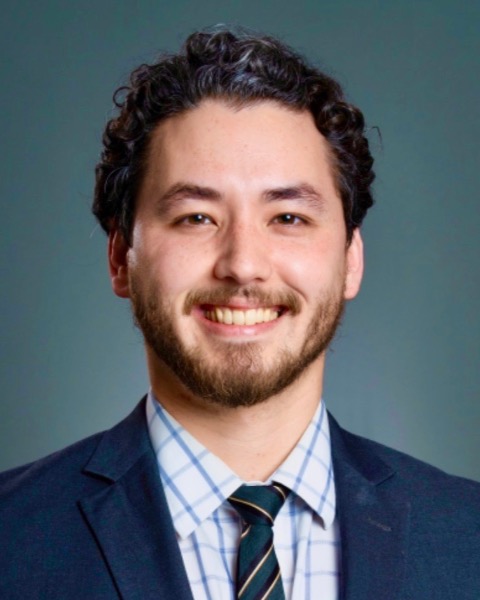Trauma
Simultaneous Fractures of the Atlas and Axis: Presentation, Management, and Outcomes from a Series of 103 Consecutive Patients
Friday, February 21, 2025

Michael Cloney, MD, MPH
Assistant Clinical Professor
University of Michigan
University of Michigan
Ann Arbor, Michigan, United States
Presenting Author(s)
Introduction: Simultaneous fractures of the atlas and axis are increasingly common, but contemporary series are limited in their size and scope of analysis
Methods: All patients with simultaneous, traumatic fractures of the atlas and axis admitted to an urban, academic, level 1 trauma center from 2012 to 2022 were retrospectively analyzed. Multivariable regression was used to identify demographic and clinical characteristics relevant to management and outcomes.
Results: 103 patients were identified. Most (52.4%) were age ≥80 years, suffered ground-level falls (80.6%), and had minor traumas (median Injury Severity Score of 1). Landell Type 1 fractures were the most common C1 fracture (50.5%), and dens fractures were the most common C2 fracture (71.8%). C1 lateral mass fractures were associated with atypical C2 fractures (OR=6.18, p=0.011), most of which (84.2%) were C2 lateral mass fractures. 21 patients (20.4%) underwent surgical stabilization, of whom 15 (14.6%) underwent surgery during their index hospitalization, and 6 (5.8%) underwent surgical intervention after a trial of nonoperative management. Selection for surgery was positively associated with having neurologic deficits (OR=5.94, p=0.041) and negatively associated with age (OR=0.91, p=0.006). Dens fracture patients were more likely to have C2 as their lower instrumented vertebra (LIV)(p=0.0150), and hangman’s fracture patients were more likely to have C3 as their LIV (p=0.0351). Dens fractures (OR=6.82, p=0.038) and hangman’s fractures (OR=37.29, p=0.019) were positively associated with nonunion, and upfront surgery was negatively associated with nonunion (OR=0.04, p=0.034).
Conclusion : Simultaneous atlantoaxial fractures most commonly occur in elderly patients after ground level falls with minor associated injuries. Lateral mass fractures of C1 and C2 are associated with one another. Surgical selection is driven by the presence of a neurologic deficit and younger age, and C2 fracture type affects the choice of surgical procedure. Having surgery decreases the odds of fracture nonunion.
Methods: All patients with simultaneous, traumatic fractures of the atlas and axis admitted to an urban, academic, level 1 trauma center from 2012 to 2022 were retrospectively analyzed. Multivariable regression was used to identify demographic and clinical characteristics relevant to management and outcomes.
Results: 103 patients were identified. Most (52.4%) were age ≥80 years, suffered ground-level falls (80.6%), and had minor traumas (median Injury Severity Score of 1). Landell Type 1 fractures were the most common C1 fracture (50.5%), and dens fractures were the most common C2 fracture (71.8%). C1 lateral mass fractures were associated with atypical C2 fractures (OR=6.18, p=0.011), most of which (84.2%) were C2 lateral mass fractures. 21 patients (20.4%) underwent surgical stabilization, of whom 15 (14.6%) underwent surgery during their index hospitalization, and 6 (5.8%) underwent surgical intervention after a trial of nonoperative management. Selection for surgery was positively associated with having neurologic deficits (OR=5.94, p=0.041) and negatively associated with age (OR=0.91, p=0.006). Dens fracture patients were more likely to have C2 as their lower instrumented vertebra (LIV)(p=0.0150), and hangman’s fracture patients were more likely to have C3 as their LIV (p=0.0351). Dens fractures (OR=6.82, p=0.038) and hangman’s fractures (OR=37.29, p=0.019) were positively associated with nonunion, and upfront surgery was negatively associated with nonunion (OR=0.04, p=0.034).
Conclusion : Simultaneous atlantoaxial fractures most commonly occur in elderly patients after ground level falls with minor associated injuries. Lateral mass fractures of C1 and C2 are associated with one another. Surgical selection is driven by the presence of a neurologic deficit and younger age, and C2 fracture type affects the choice of surgical procedure. Having surgery decreases the odds of fracture nonunion.

.jpg)